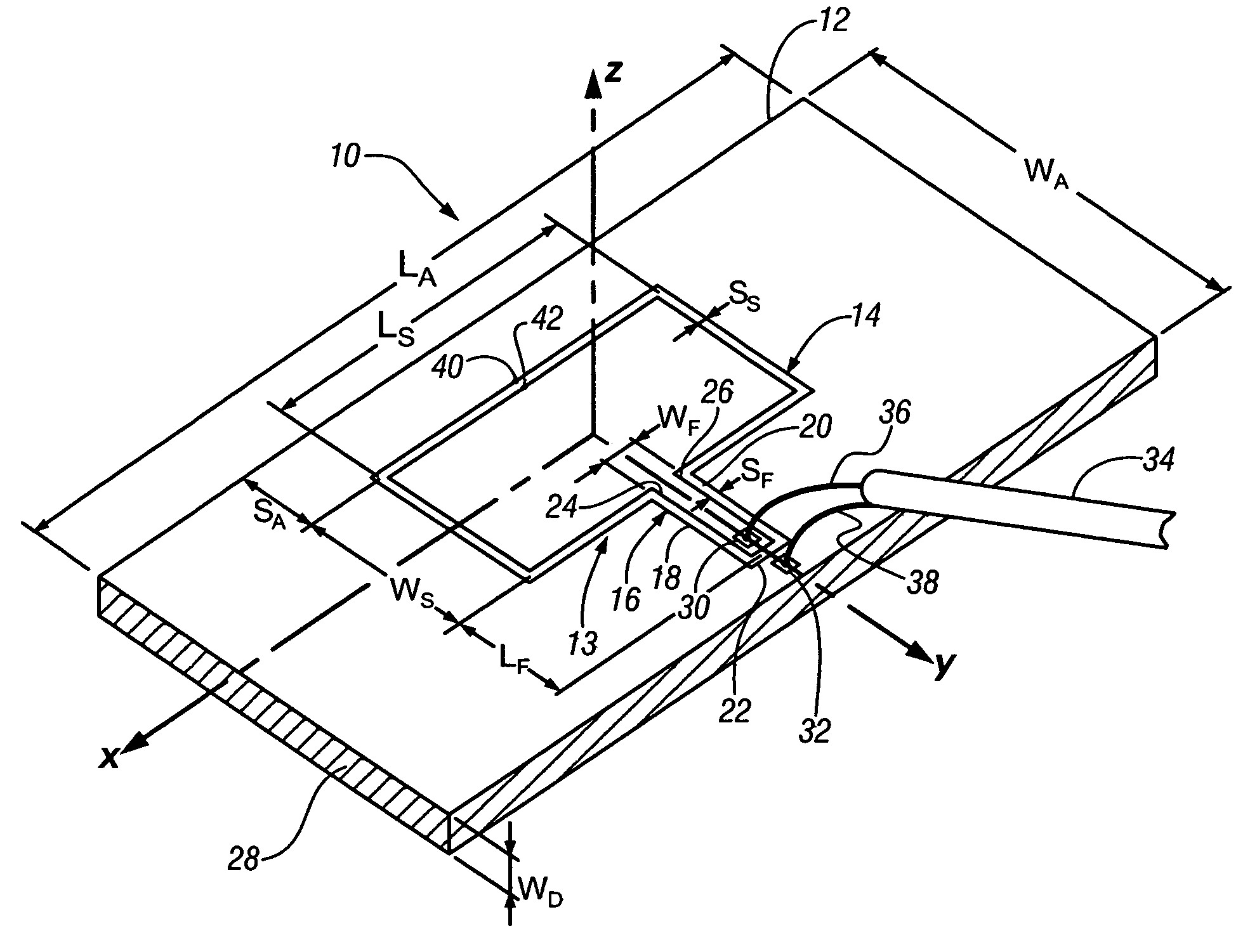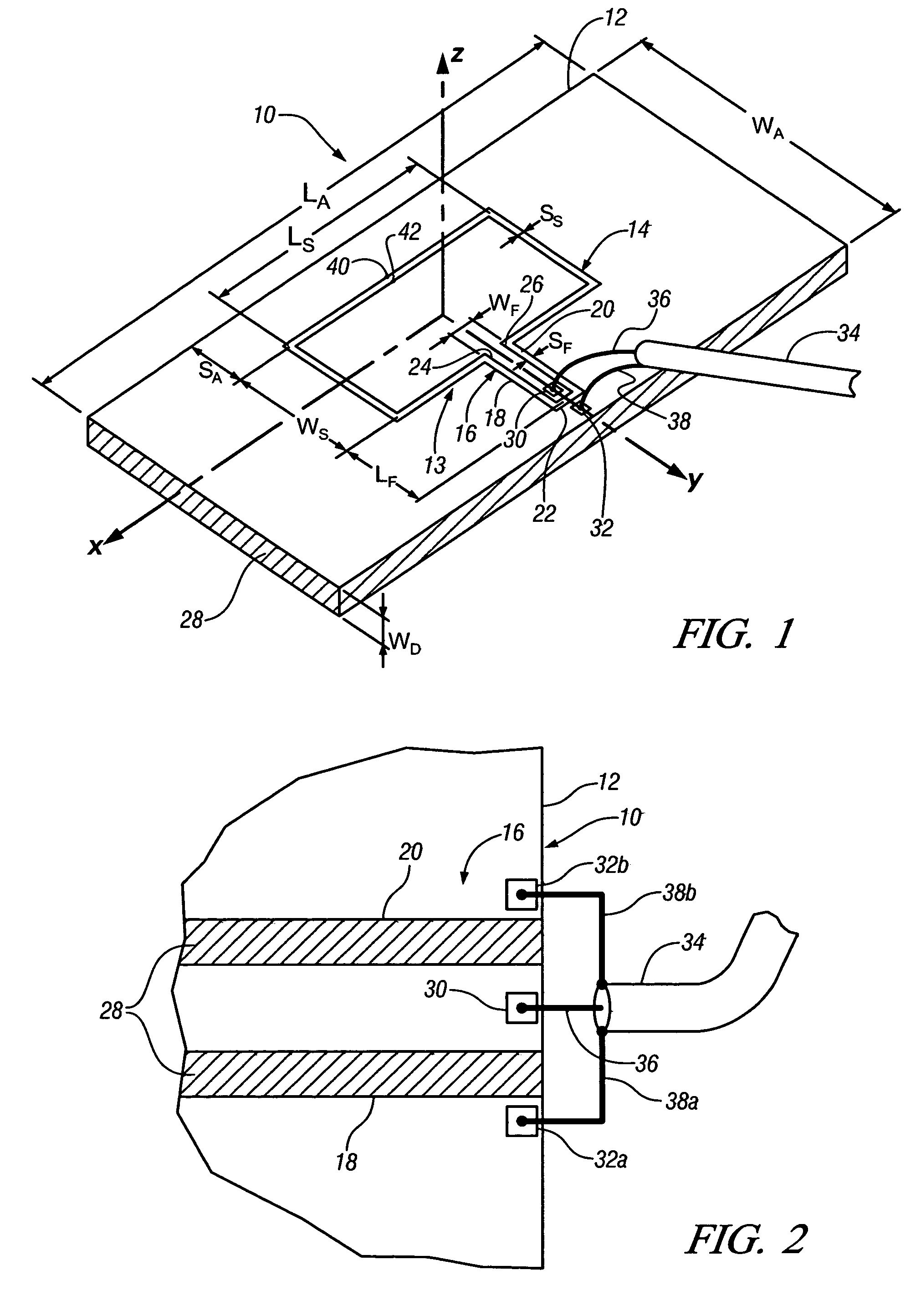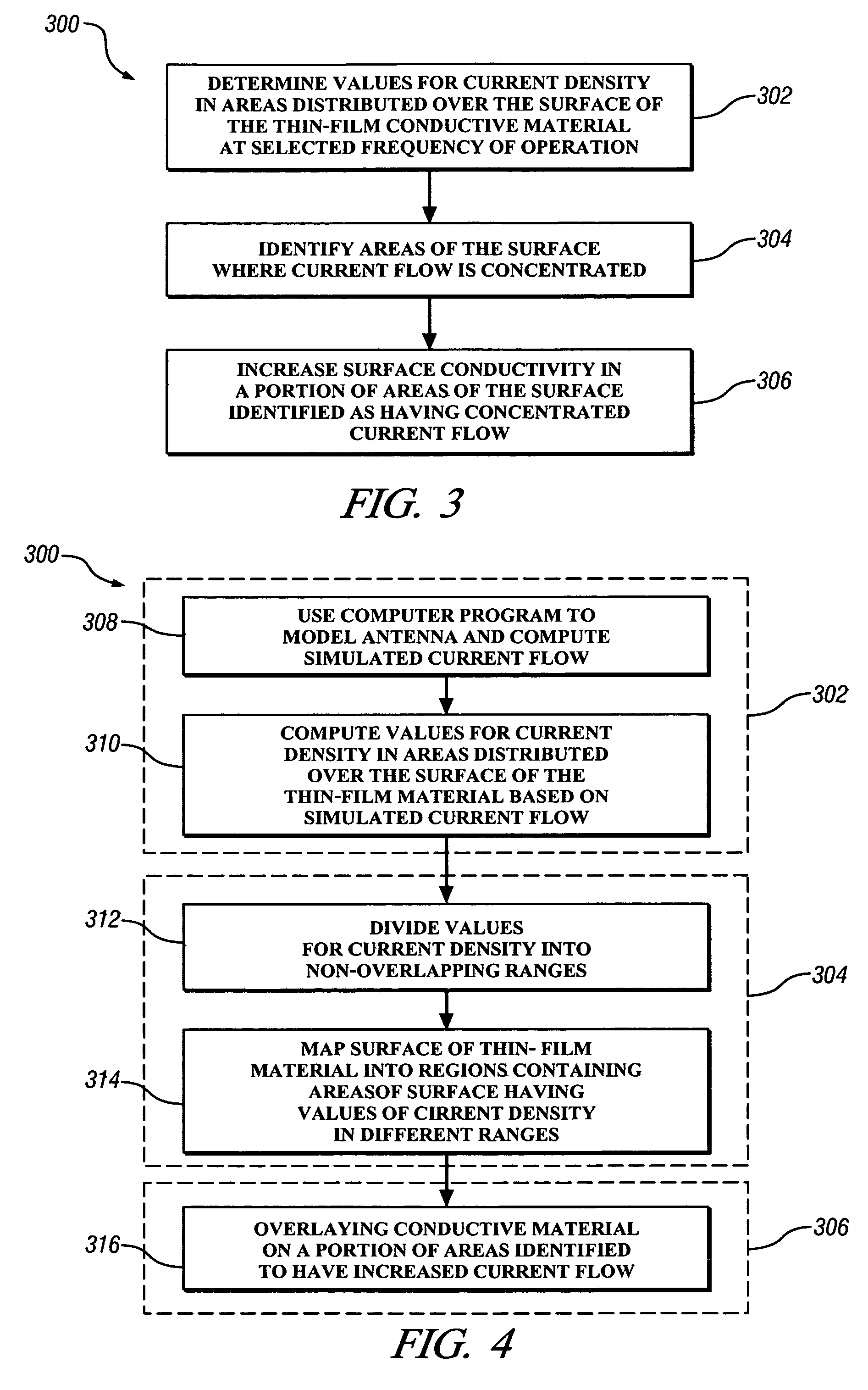Transparent thin film antenna
a thin film antenna and transparent technology, applied in the direction of antennas, slot antennas, antennas, etc., can solve the problems of reducing the performance of the antenna, reducing etc., to improve the efficiency of the antenna, reduce ohmic loss, and increase the surface conductivity
- Summary
- Abstract
- Description
- Claims
- Application Information
AI Technical Summary
Benefits of technology
Problems solved by technology
Method used
Image
Examples
Embodiment Construction
[0026]Turning now to the drawings, and referring first to FIG. 1, there is shown in diagram form, a perspective view of a thin-film antenna, generally designated as 10, which will be used to demonstrate the method of the present invention. Is should be noted that use of antenna 10 is intended only to be exemplary, as the method of the present invention can be applied to thin-film conducting surfaces of antennas having different forms and structures.
[0027]The thin-film antenna 10 is comprised of a sheet of transparent thin-film conducting material 12, having an aperture formed in its surface by the closed continuous slot designated generally by 13. The closed continuous slot 13 is comprised of two connected slot portions, a rectangular shaped slot portion designated generally by 14, which connects to a substantially U-shaped slot portion designated generally by 16. The slot of the U-shaped portion 16 is comprised of two essentially parallel slot sections 18 and 20, each connected to ...
PUM
 Login to View More
Login to View More Abstract
Description
Claims
Application Information
 Login to View More
Login to View More - R&D
- Intellectual Property
- Life Sciences
- Materials
- Tech Scout
- Unparalleled Data Quality
- Higher Quality Content
- 60% Fewer Hallucinations
Browse by: Latest US Patents, China's latest patents, Technical Efficacy Thesaurus, Application Domain, Technology Topic, Popular Technical Reports.
© 2025 PatSnap. All rights reserved.Legal|Privacy policy|Modern Slavery Act Transparency Statement|Sitemap|About US| Contact US: help@patsnap.com



